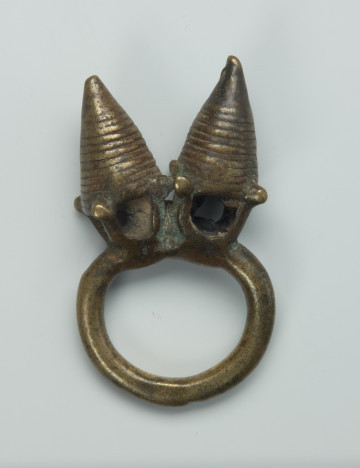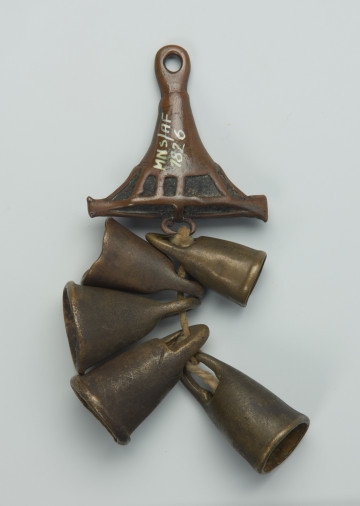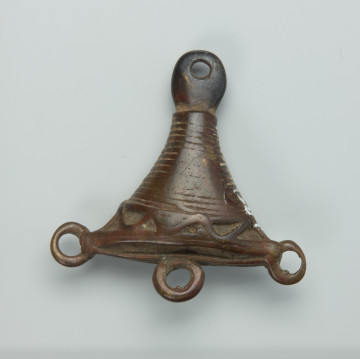
Ring
między 1951 — 2000
National Museum in Szczecin
Part of the collection: Collection of Dogonian art
The pendant was obtained during the Students' Ethnographic Expedition ‘Africa 76-77', supervised by the National Museum in Szczecin. The Dogon believed it to be a Tellem product or in imitation of Tellem ornaments made by a Dogon smith. The Tellem were an indigenous people inhabiting the Bandiagara Escarpment in the 11th-15th centuries, before the arrival of the Dogon. In the 1960s, Rogier M.A. Bedauxa, a Dutch archaeologist, explored the caves above the Dogon villages and confirmed the existence of the Tellem culture, in which blacksmithing and foundry-making were known. The pendant in question was cast in bronze using the lost wax method. In many West African cultures, a blacksmith's assistant takes care of making the mould. Only skilful manufacturers can cover the moulds with delicate patterns in the form of thin threads, braids, spirals, balls, stylised human faces or zoomorphic figures.
Katarzyna Findlik-Gawron
Author / creator
Dimensions
cały obiekt: height: 3,8 cm, width: 4,1 cm
Object type
body adornment
Creation time / dating
Creation / finding place
Identification number
Location / status

między 1951 — 2000
National Museum in Szczecin

między 1951 — 2000
National Museum in Szczecin

między 1201 — 1500
National Museum in Szczecin
DISCOVER this TOPIC
National Museum in Szczecin
DISCOVER this PATH
Educational path